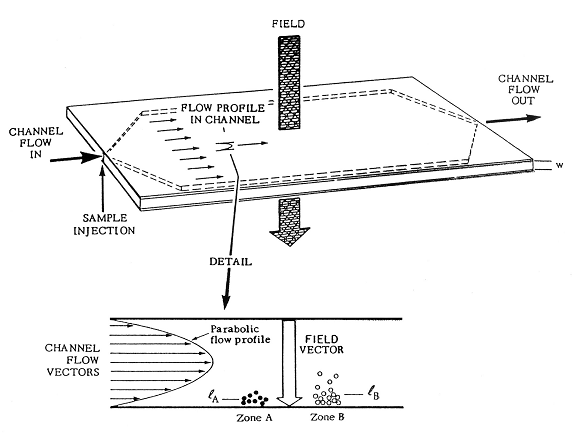 |
|
|
[Sponsors] | |||||
|
|
|
#1 |
|
New Member
|
Hi all, I'm quite new to CFD and was wondering if you could shed some light on this situation I would like to model.
I have a rectangular geometry (sideview of image below) (300 x 0.375 mm) with an inlet and outlet (left to right) with water acting as the working fluid. I would then like another fluid to enter and exit from top to bottom which the has an effect on the flow from left to right (see image below, Field Vector):  and was wondering how I go about this. There is usually a membrane on the top and bottom surface which prevents particles escaping, but allows the cross fluid to pass. Thanks for listening and I hope to hear your comments! Alex (If you were wondering  : without the presence of a cross flow, particles of both sizes would not separate in the channel flow. But with the cross flow, the smaller particles (which diffuse more) travel in along the centre (and fastest) of the flow pattern and larger particles in the outer slower regions. Because the particles travel at different speeds, they reach the end of the channel at different times and this can be detected.) : without the presence of a cross flow, particles of both sizes would not separate in the channel flow. But with the cross flow, the smaller particles (which diffuse more) travel in along the centre (and fastest) of the flow pattern and larger particles in the outer slower regions. Because the particles travel at different speeds, they reach the end of the channel at different times and this can be detected.)
|
|
|
|

|
|
 |
|
|
 Similar Threads
Similar Threads
|
||||
| Thread | Thread Starter | Forum | Replies | Last Post |
| Complex problem: Open Channel Flow | lett | FLUENT | 18 | November 10, 2018 19:30 |
| maintain a constant flow rate in channel flow ? | Lewis | Main CFD Forum | 2 | September 28, 2010 12:35 |
| PotentialFOAM for channel flow | albcem | OpenFOAM Running, Solving & CFD | 0 | October 16, 2008 13:18 |
| Channel flow set up | Jung | Main CFD Forum | 2 | November 21, 2007 07:51 |
| pressure outlet (open channel flow) | Willem Brantegem | Main CFD Forum | 0 | April 3, 2007 10:39 |